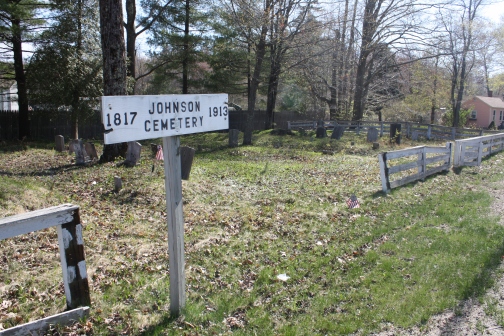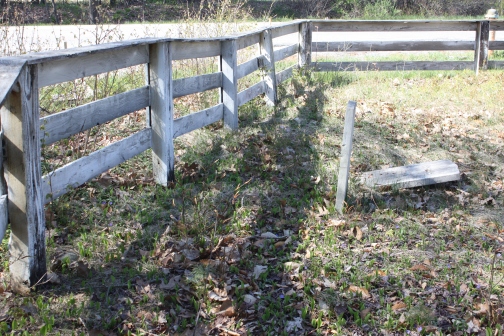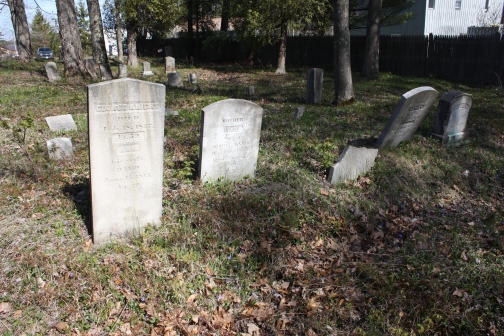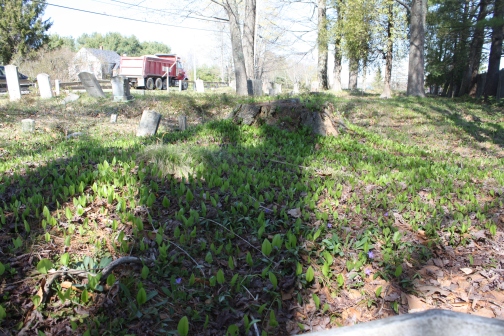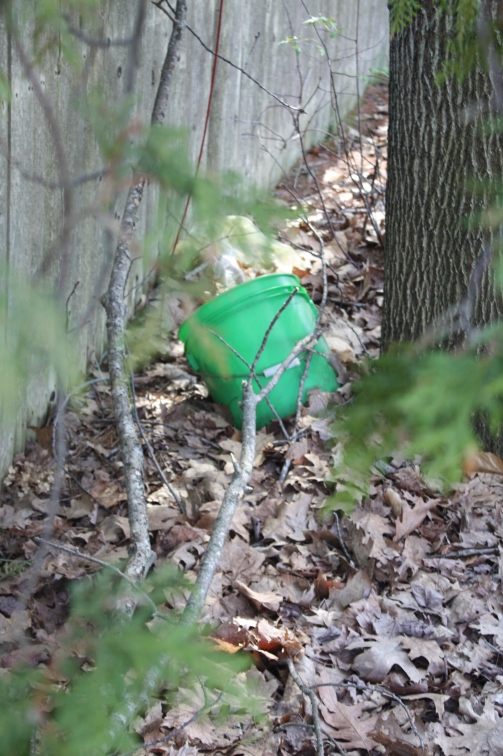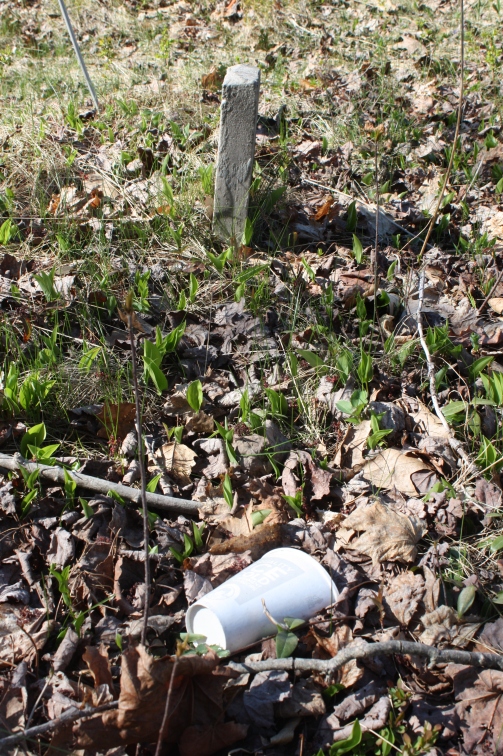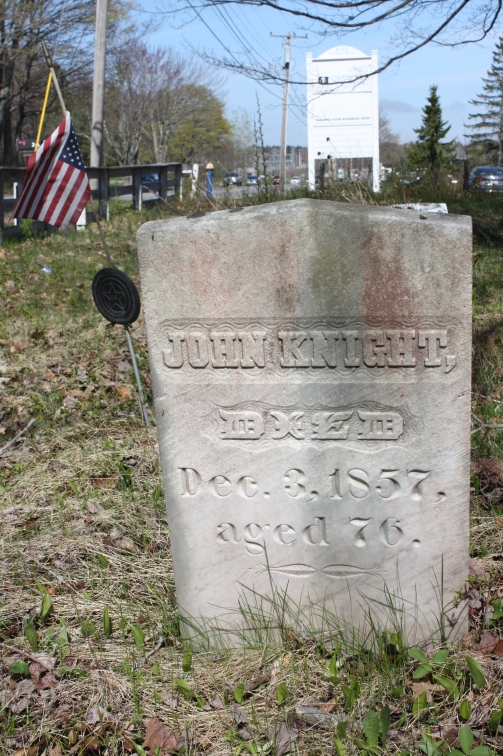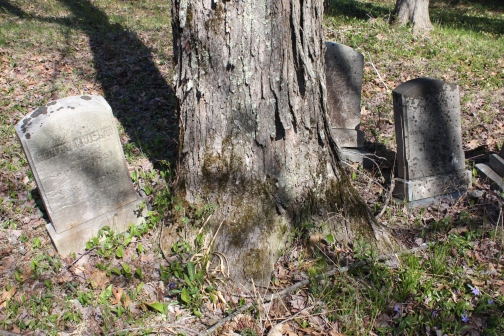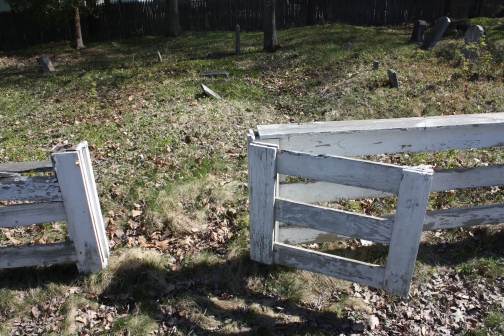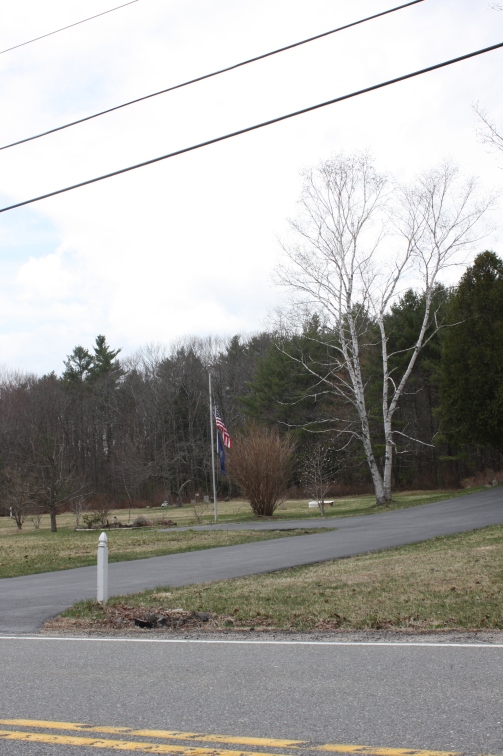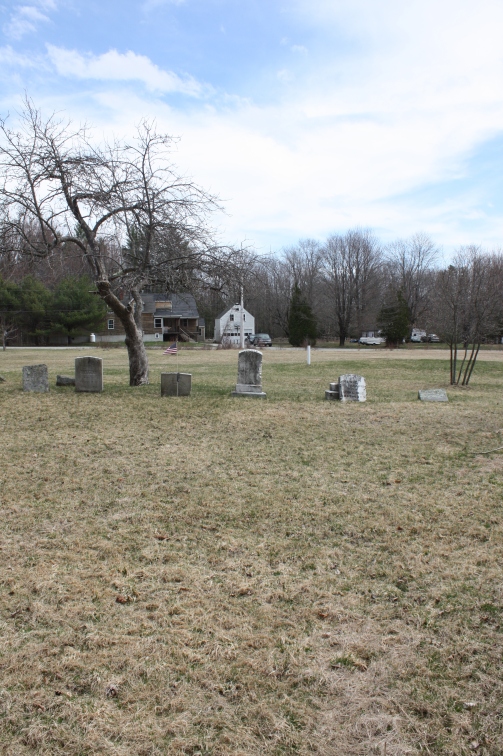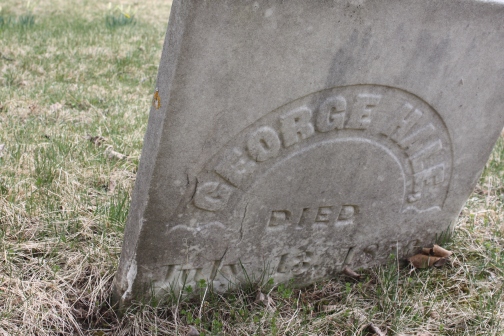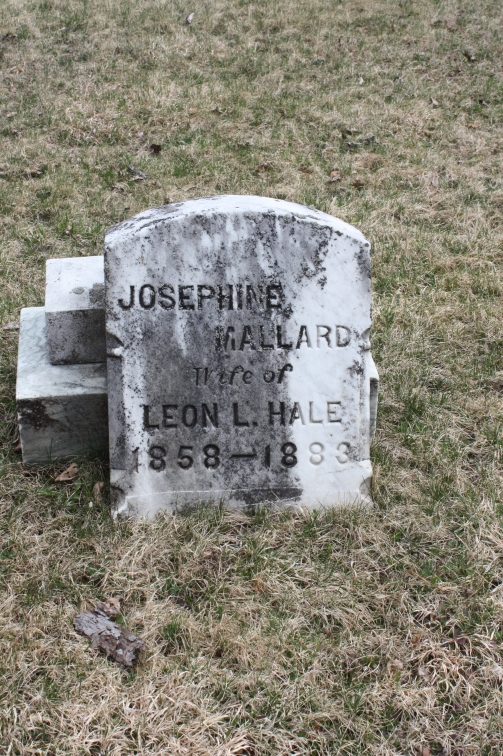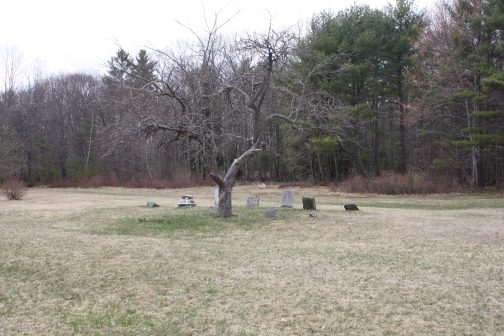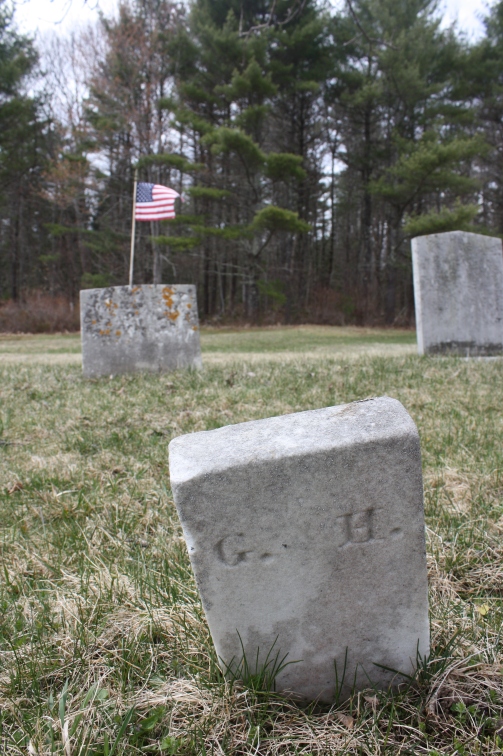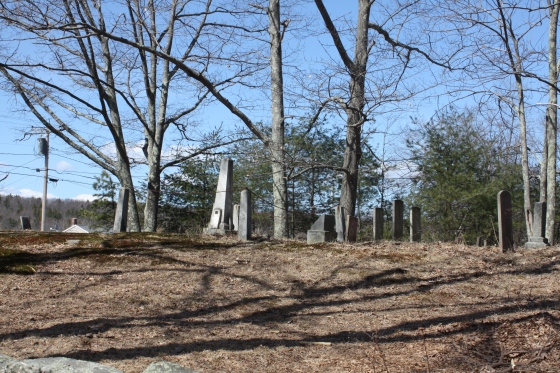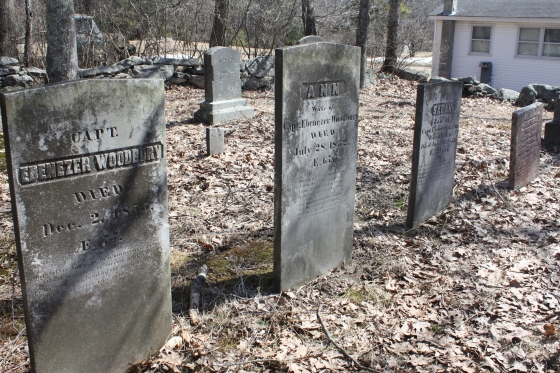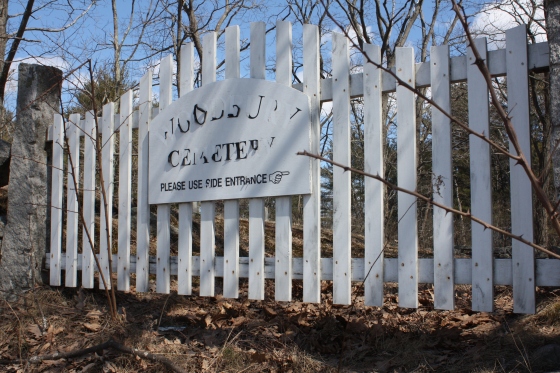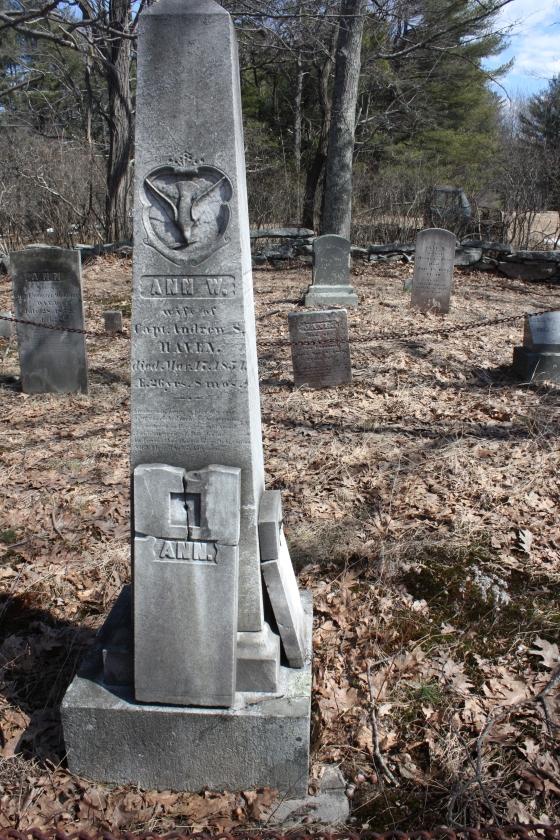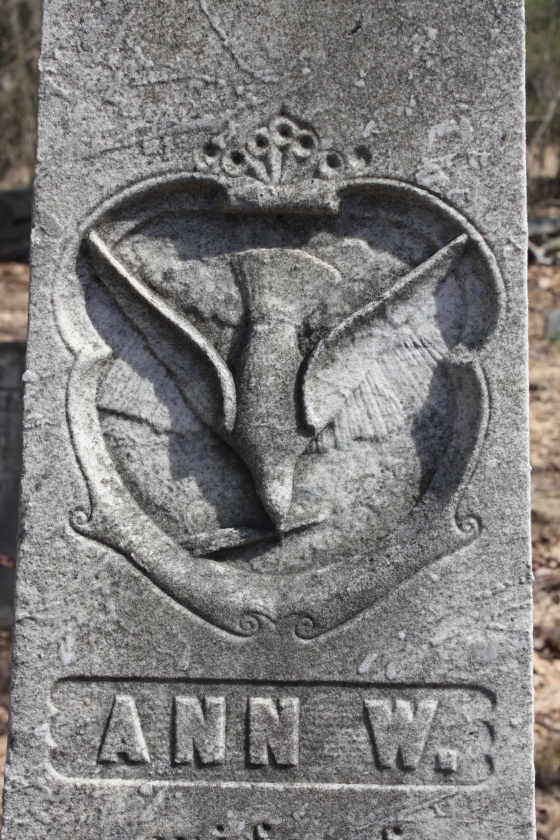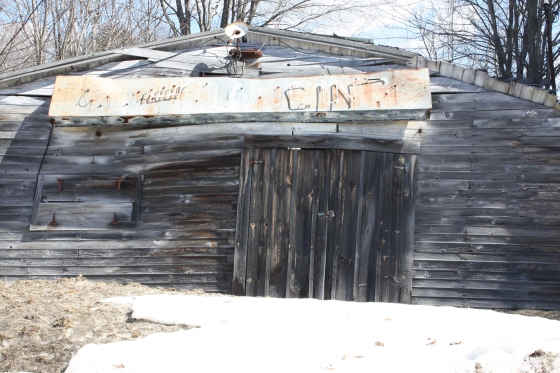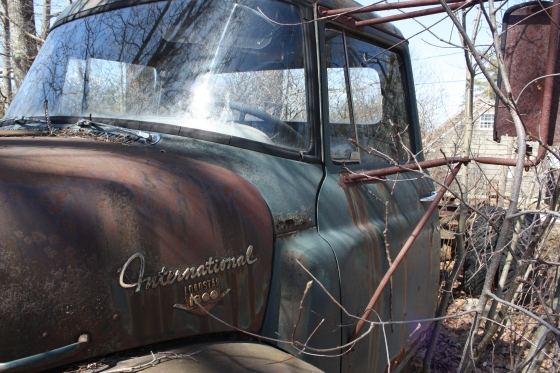Johnson Cemetery isn’t hidden. It sits prominently along Route 22 in Westbrook, on the left side of the road if you’re headed toward Gorham. I can’t count the times I’ve taken this road on my way to work. I used to be employed by a farm in the area, and now do a bit of dog walking in Gorham. I take Route 22, also called County Road, multiple times a week. And I pride myself on being observant. But until recently I had no idea that Johnson Cemetery existed. It’s nestled amongst the industrial buildings that now dominate County Road and is, apparently, quite easy to miss. The cemetery lacks fanfare – it’s bordered by a plain white fence with a handmade wooden sign at the front. I don’t know what made me notice it during one of my most recent drives to walk my dog friend in Gorham, but I felt like it had been magically transported to that particular spot. How else had I missed it?
I drove out to Johnson Cemetery on a recent Monday afternoon. I had to drive past it, turn around in a dirt parking lot, and then saddle my Honda up to the side of the road. It doesn’t seem that many people frequent the area. There’s absolutely no pedestrian traffic on County Road, and most cars go buzzing by at 40-50 MPH. Just getting out of my car is a hazard, and when I do I’m immediately showered in dirt and dust from a passing vehicle.
The grounds of Johnson Cemetery aren’t particular vast, but it’s larger than many of the other family cemeteries I’ve been to. The sign tells me that it was active from 1817-1913. The brush has begun to overtake some of the headstones and the long grasses are dotted with small purple flowers. Unfortunately, there are pieces of rubbish throughout the cemetery. It seems that passersby have thought nothing of tossing out their fast food containers as they speed back to work from their lunch hours. The plastic cups and napkins I find there make it a particularly sad sight.
Many of the headstones at Johnson Cemetery bear the name, “Knight”. A popular surname in the Westbrook area, I know that a family of Knights own the popular Smiling Hill Farm just down the road from Johnson Cemetery, and I have to assume that some of their ancestors are located within the grounds. Unfortunately, the man for whom the cemetery is named is unidentifiable. His headstone is worn, and all that’s visible is his last name, “Johnson”. A nearby stone is for Elizabeth Johnson, who is listed as being the wife of William. I’m unable to locate any concrete information about William.
The first interment in Johnson Cemetery seems to have been for Ann Knight, who died in 1817. But like with William Johnson, I am unable to locate any information about her. There are dozens of Ann Knights to be found on Ancestry.com, and without more information about the woman’s life, it’s difficult to say which, if any of them, could conclusively be her.
There was an American flag by one of the headstones, which was for John Knight. He must’ve served in the armed forces in some capacity, but again, internet searches are inconclusive because of his common name. There was a John Knight stationed at Fort Preble in the early 19th century, but I have no way of knowing whether or not that was the John Knight buried at Johnson Cemetery.
I find it similarly difficult to discern the types of employment the people at Johnson Cemetery may have been employed in. Some were probably farmers, as most of the now-industrial surroundings were once farmlands. Perhaps, like those who lived in the Duck Pond area of Westbrook, these individuals would have combined agriculture with other types of revenue-generating activities. However, by the 19th century, when most of the folks at Johnson Cemetery lived, Westbrook was already developing paper mills and various forms of industry. It seems likely that these individuals would have been engaged in the burgeoning factories of the thriving city.
It’s difficult to pin down any exact information about Johnson Cemetery or the people within it. My internet searches have been futile, and I think that over the summer I’ll have to pay a visit to the Westbrook Historical Society and inquire about the lives of these individuals. I do know that I’ll be taking some time to visit and clean up some of the trash that litters the grounds – just because Johnson Cemetery is on a busy through-way doesn’t mean it should be ignored or mistreated.
